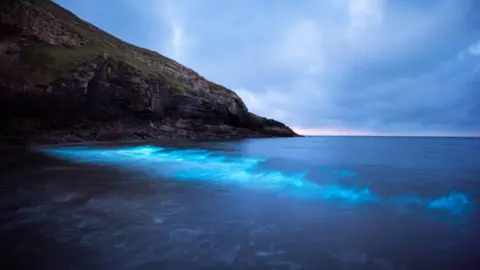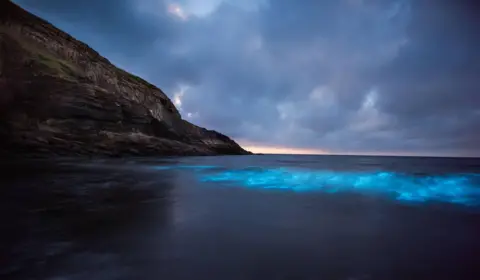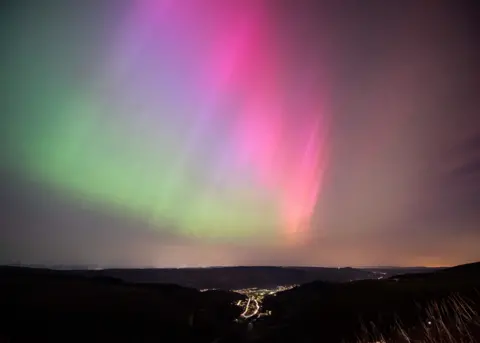Man’s joy at Northern Lights and glowing sea shots
 Lee McGrath
Lee McGrathHe captured some stunning images of the Northern Lights above the south Wales valleys last month.
But for his latest shots of amazing natural phenomenon, photographer Lee McGrath did not need to look up at the sky.
Instead he stared down at the waves lapping the shores of Dunraven Bay, Vale of Glamorgan, where bioluminescent plankton were lighting the water an incredible electric blue.
Captured in the early hours of Friday, it is thought to be the first sighting of this magical occurrence in Wales in 2024 and the kind of shot which features highly on every photographer’s bucket list.
“We are so lucky in Wales, a few steps out of our door in Wales we can capture the Aurora, Milky way and bioluminescent plankton all on our doorstep,” Mr McGrath said.
“To be able to capture all these natural phenomena in our own country is pretty special.
“In 2020, we were also able to capture Comet Neowise in Wales and lucky to have noctilucent clouds the same evening.”
The light in his latest shots is an ethereal blue that flashes along the edge of a wave as is rolls in to shore.
It is caused by bioluminescent plankton, tiny creatures floating in the sea that have the ability to emit light when disturbed by a predator or motion.
This sets off a light display for onlookers on shore, who are coming in increasing numbers to Welsh beaches late at night to try to see the plankton for themselves.
Aside from plankton, it is a trick also shared by the likes of certain squid and jellyfish species, as well as insects such as fireflies and glow-worms.
The result sees hordes of onlookers regularly flock to certain parts of the UK coast each year to witness it first hand.
There are even numerous sites on social media where enthusiasts meet to share information with plankton seekers about the best times and places in which to do so.
 Lee McGrath
Lee McGrath“Me and a couple of other local photographers have been following the plankton for a few years and have built up a map of where previous sightings have taken place,” said Lee, an NHS worker from Bridgend.
“Then it’s all about putting in the time to place yourself in those locations and just hope you’ll be lucky.”
He added: “I spent four hours at Dunraven Bay because, from around midnight, I could see slight sparkles starting to appear in the waves.
“Then, from about three in the morning, it got stronger and I was able to capture a few images.
“We think the warm weather helps as it usually pops up around this time of year, but it can go as late as October sometimes.”
 Lee McGrath
Lee McGrathLikening the experience to “meditation” and the kind of thing “that really puts life into perspective” Lee warned others trying to get similar photos to be careful.
“Shooting at night can be tricky and you need to be aware of your surroundings,” he said.
“The tides can come in quicker than you think and it’s easy to get yourself into a bit of a situation.”
He added: “One other tip: keep torches to a minimum wherever possible, you will see more bioluminescence using less light.”







